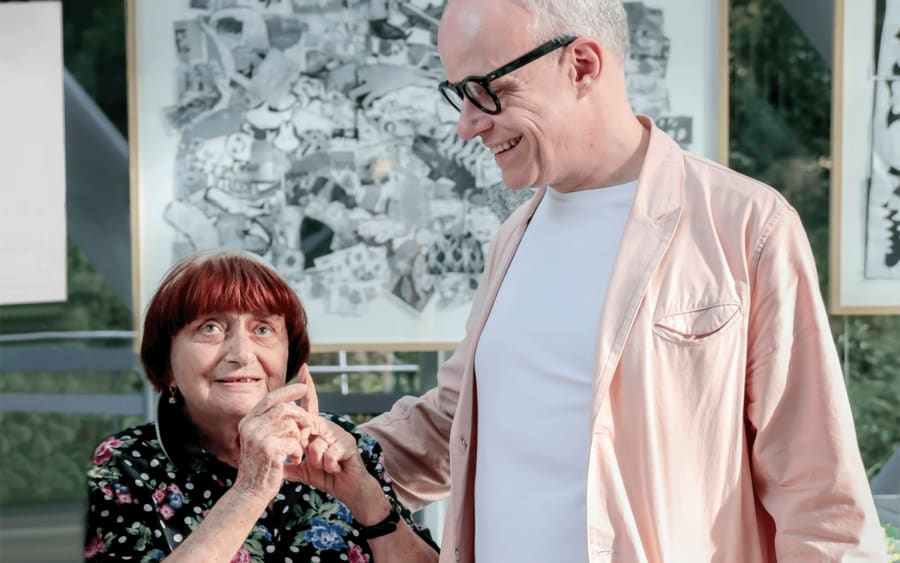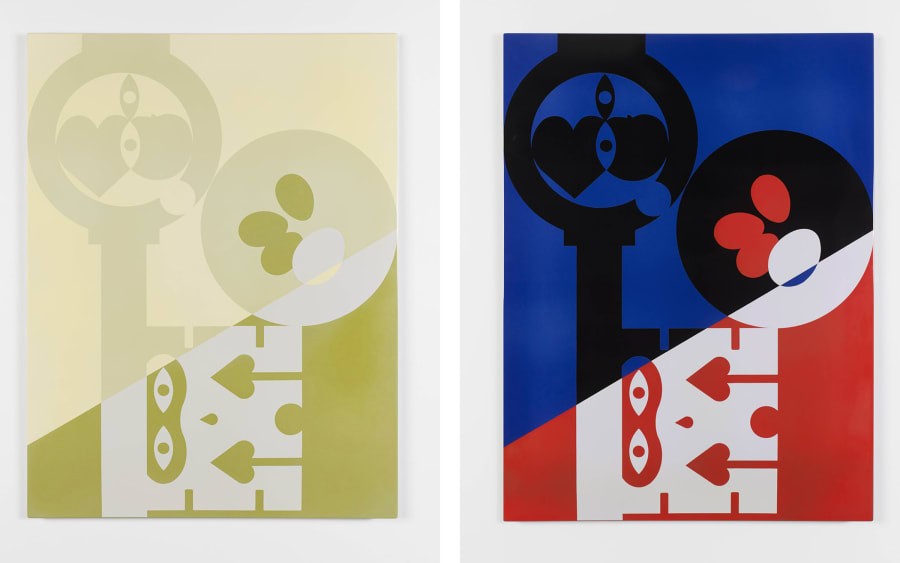Above a door at the very end of Rue de Lille, in the 7th arrondissement in Paris – an elegant address, just a few buildings from where both Jacques Lacan and Serge Gainsbourg once lived – hangs the 7L sign designed by Karl Lagerfeld, barely more noticeable than those of the surrounding antique shops. It is a place that seeks to remain discreet while others create a buzz around it. It is partly open to the public, as a bookshop, and partly private, as a library with a cultural program.
7L is legendary: It is home to both Lagerfeld’s art bookshop and his former photography studio, which is also a library, at once majestic and intimate. A dressing room has also remained intact, with mirrors lit by blue bulbs to soften the light, and a wooden screen painted with large red roses. But to discover the entirety of these spaces, you need to be a member of the Friends of 7L.
Number 7 Rue de Lille was initially a paper warehouse, and later it became the headquarters of an automobile magazine. In 1991, the film director and producer, Claude Berri made it into an art gallery – Renn Espace d’art contemporain. It was in 1999 that Karl Lagerfeld settled there. The idea behind the bookshop was to offer a specific selection of works on photography and the arts in general. The concept: present the books horizontally thereby putting them on equal footing and making the titles easily readable. All the catalogues of current and recent exhibitions are given a place on the shelves, surrounded by biographies, essays, classics, and evergreen titles.
The photo studio, now known as the ‘library set’, sits behind a heavy door like the backstage of a theater. In fact, the day before our visit, a dress rehearsal took place for Lorraine de Sagazan and Guillaume Poix’s Michelangelo Antonioni-inspired Le Silence, to be performed at the Théâtre du Vieux-Colombier from January 31.
Entering Lagerfeld’s studio is like going on a journey. The eye takes in books stacked atop one another all the way up to the glass roof. The top shelves are accessible via a suspended walkway. Small signs read, ‘If you wish to consult a book, please leave it on a table afterwards.’ This is not the library of a bibliophile, but of a reader, a lover of books, a curious soul. The books are those he bought, used, and organized in his own idiosyncratic way. Marcel Proust neighbors Madame de Staël, François Bluche’s Dictionnaire du Grand Siècle abuts a Daidō Moriyama monograph, while the 1972 Documenta V catalogue sits beside a book on Félix Vallotton.
It is said that Lagerfeld came there at night, directing photo shootings, two or three times a week, after days spent on Rue Cambon or in Rome. It is also said that he always bought several copies of the books – one to be annotated or cut, another to be kept intact, and others to give as a gift. A few artworks are placed here and there, such as the tower of cameras whose maker remains unknown. Around the room, the long, deep couches, the library ladders, the strange metal bell-shaped lights hanging from the ceiling, two flash umbrellas, production lights, and a photo booth have all been left intact. Only a few carpets and armchairs have been added, brought from some of his homes.
Every day, the program is intense. The exhibition space currently features thirteen portraits of artists by the late Agnès Varda – selected by her children Rosalie Varda and Mathieu Demy – including photos of Delphine Seyrig, Federico Fellini, Alain Resnais, and Alain Robbe-Grillet, among others. In addition to book signings and the cultural program Correspondances, every first Wednesday of each month, members of 7L are invited to attend readings during which a guest will present a selection of books. They will also be able to listen to a sound work by the Soundwalk Collective, an experimental body founded in 2000 by Stephan Crasneanscki, in which figures such as FKA Twigs, Charlotte Rampling, and Anri Sala will read from books from the 7L library. Today, the team is still in the process of discovering these walls of books and making them their own. 7L is coming together as a space apart: a living, breathing organism.
Anaël Pigeat is an art critic, editor-at-large of The Art Newspaper, journalist for Paris Match, and curator.
English translation: Jacob Bromberg.
Full-bleed images: 1. Le « plateau- bibliothèque », ancien studio photographique de Karl Lagerfeld ©Mathieu Zazzo/Librairie 7L. 2. Opéra centenaire de la villa Noailles - Ressusciter la rose ©Luc Bertrand / Librairie 7L. 3. Opéra centenaire de la villa Noailles - Ressusciter la rose. © Luc Bertrand / Librairie 7L.


